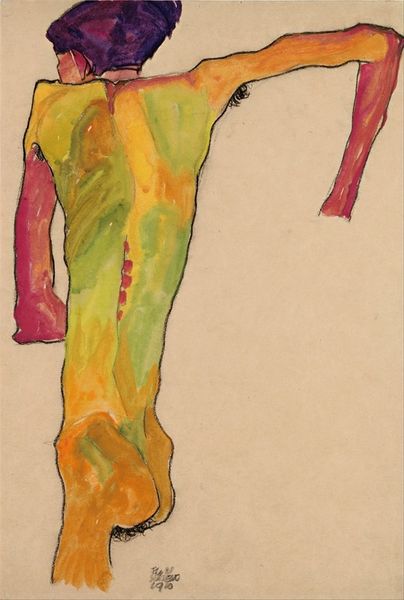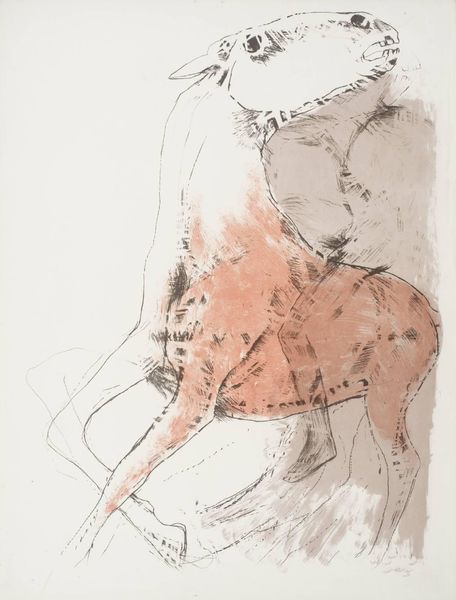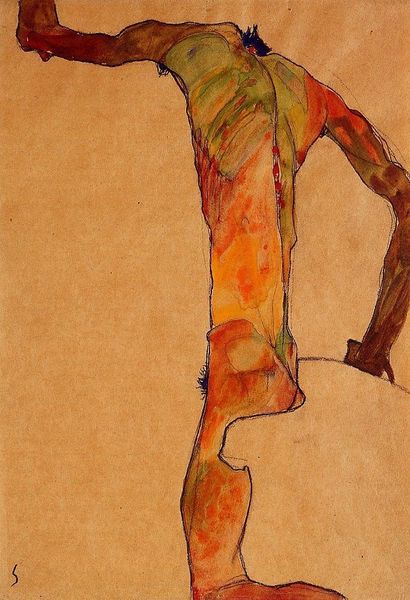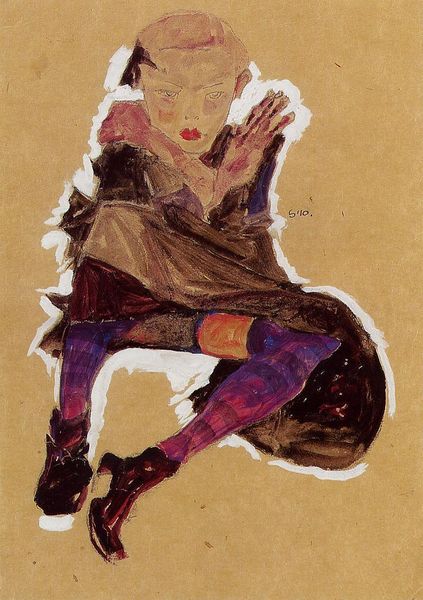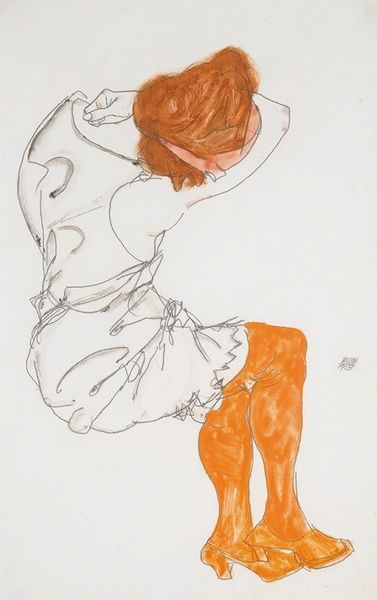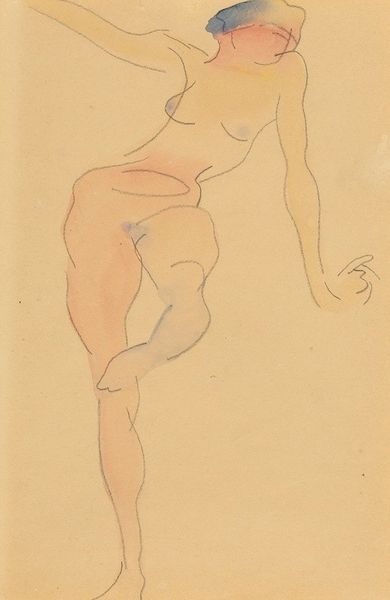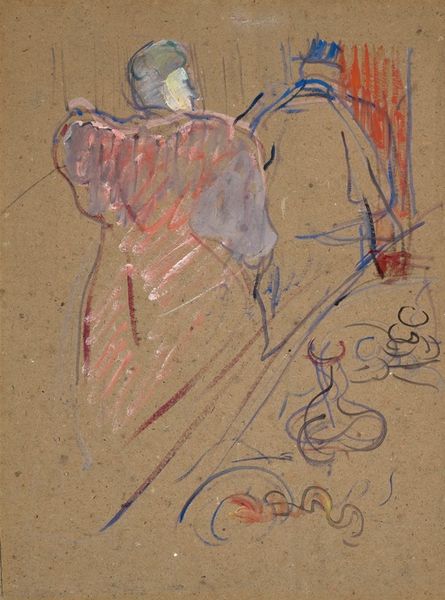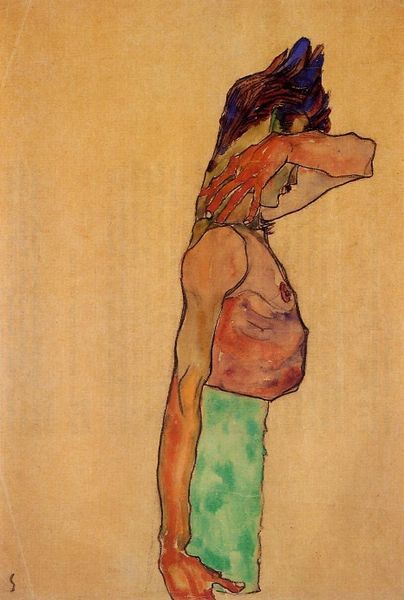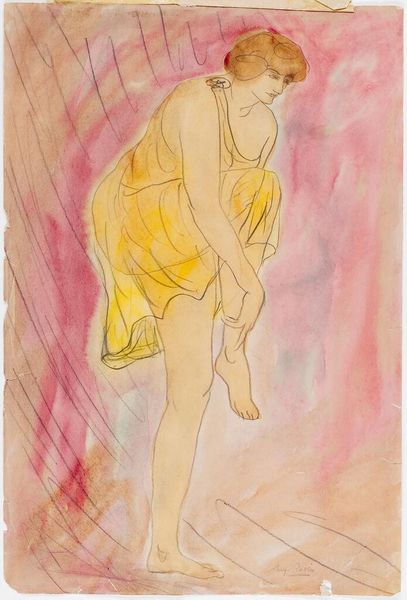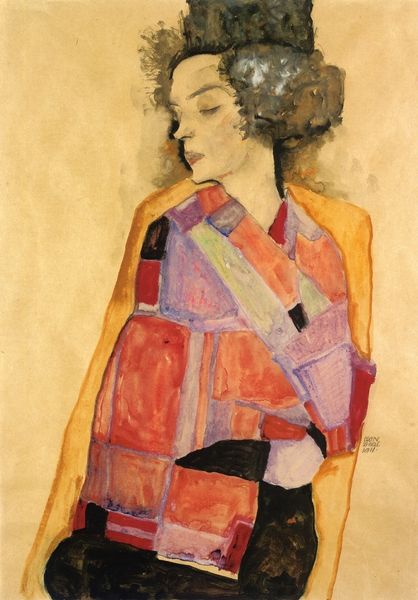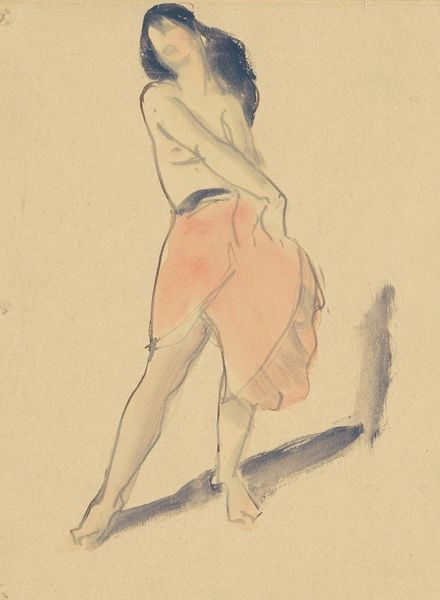
drawing, watercolor
#
portrait
#
drawing
#
figuration
#
watercolor
#
coloured pencil
#
expressionism
Copyright: Public Domain: Artvee
Curator: Look at this intriguing portrait, Kneeling Female in Orange-Red Dress. Egon Schiele created this figurative work around 1910. It’s watercolor and colored pencil on paper. Editor: My immediate reaction is a kind of discomfort. The figure seems trapped, both by her own pose and the bold angularity of her clothing. You can practically feel the cheap paper grain underneath the washes of color too. Curator: Yes, there's a palpable sense of unease. Red has long held associations with strong emotions, and the dress, while visually striking, seems to constrict the figure, almost like armor, and it reflects that raw, confrontational edge so characteristic of early Expressionism. Editor: Exactly. And I can't ignore the materiality – watercolor is so often associated with delicate landscapes, but here, it is being deployed for a rather grotesque depiction of female figure. Also the way he barely uses it – the ground comes through almost like a found surface. It emphasizes the artificiality, like stagecraft. Curator: Notice the woman’s hand obscuring her face; a gesture of self-concealment that echoes across centuries of art when women lack full social authority. It lends itself to further questions: who is she, and why is she hiding? The gaze she gives the viewer is piercing despite the gesture, which shows something else. Editor: And that one seemingly random line connecting the back of the dress to the background. It draws attention to the construction. Not just the drawing itself but of the figure; the performance of it all. It also highlights how the color creates the folds and shape. Schiele foregrounds that performative, made element. Curator: These angular planes defining the clothing are so visually arresting, breaking the figure into distinct, geometric shapes—perhaps to reveal her fractured internal state, like looking into a disturbed mind through the symbolic dress. Editor: It almost feels as though the dress is made of repurposed paper itself. Maybe it is referencing a lack of raw materials in Vienna or Schiele’s own lack of financial backing! Even her shoes are red; maybe they have had to dye them? This evokes feelings of scarcity during the period. Curator: The artwork embodies the cultural climate in pre-war Vienna, filled with psychological intensity, revealing hidden anxieties about society through powerful imagery and symbolic color. Editor: The painting really challenges us to reconsider both how we perceive figuration and the artistic possibilities held within accessible, base materials and simple tools. It pushes you to reconsider art making.
Comments
No comments
Be the first to comment and join the conversation on the ultimate creative platform.
